Looking for a Personalized Diet Plan?
Is Sabudana Good for Weight Loss
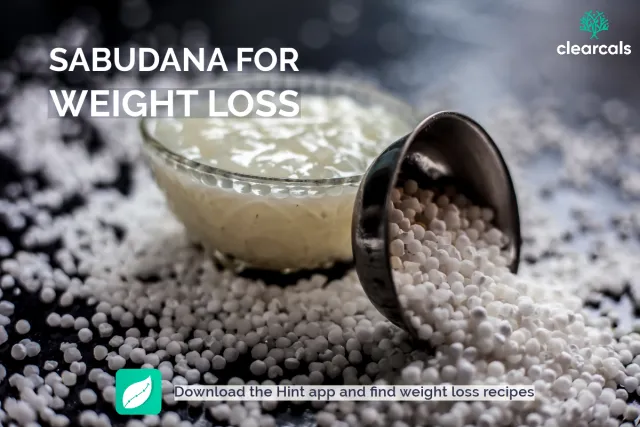
TLDR
- Sabudana is high in calories, with 376 kcal per 100 grams.
- It’s primarily composed of carbohydrates, with very little protein and fiber.
- Sabudana may not be ideal for weight loss unless consumed in moderation and combined with high-protein, high-fiber foods.
What Is Sabudana?
Sabudana, also known as sago, is a starch extracted from cassava roots. It’s a common ingredient in Indian cuisine, especially during fasting periods.
While sabudana nutrition offers energy and some vitamins, it is predominantly high in carbohydrates, providing an immediate energy source but limited protein and fiber, making it less ideal for weight loss.
Sabudana Calories per 100g
One small cup (100 grams) of sabudana provides approximately 376 kcal, with 100% of these calories coming from carbohydrates. With its high-calorie content, portion control is essential if you’re considering it as part of a weight-loss diet.
Calories in Sabudana (per 100 grams):
Carbohydrates
: 100%
Protein
: 0%
Fat
: 0%
For precise tracking, use the Hint app’s free calorie and macronutrient intake features, which allow you to log calories from sabudana and ensure you stay on track with your nutrition goals.
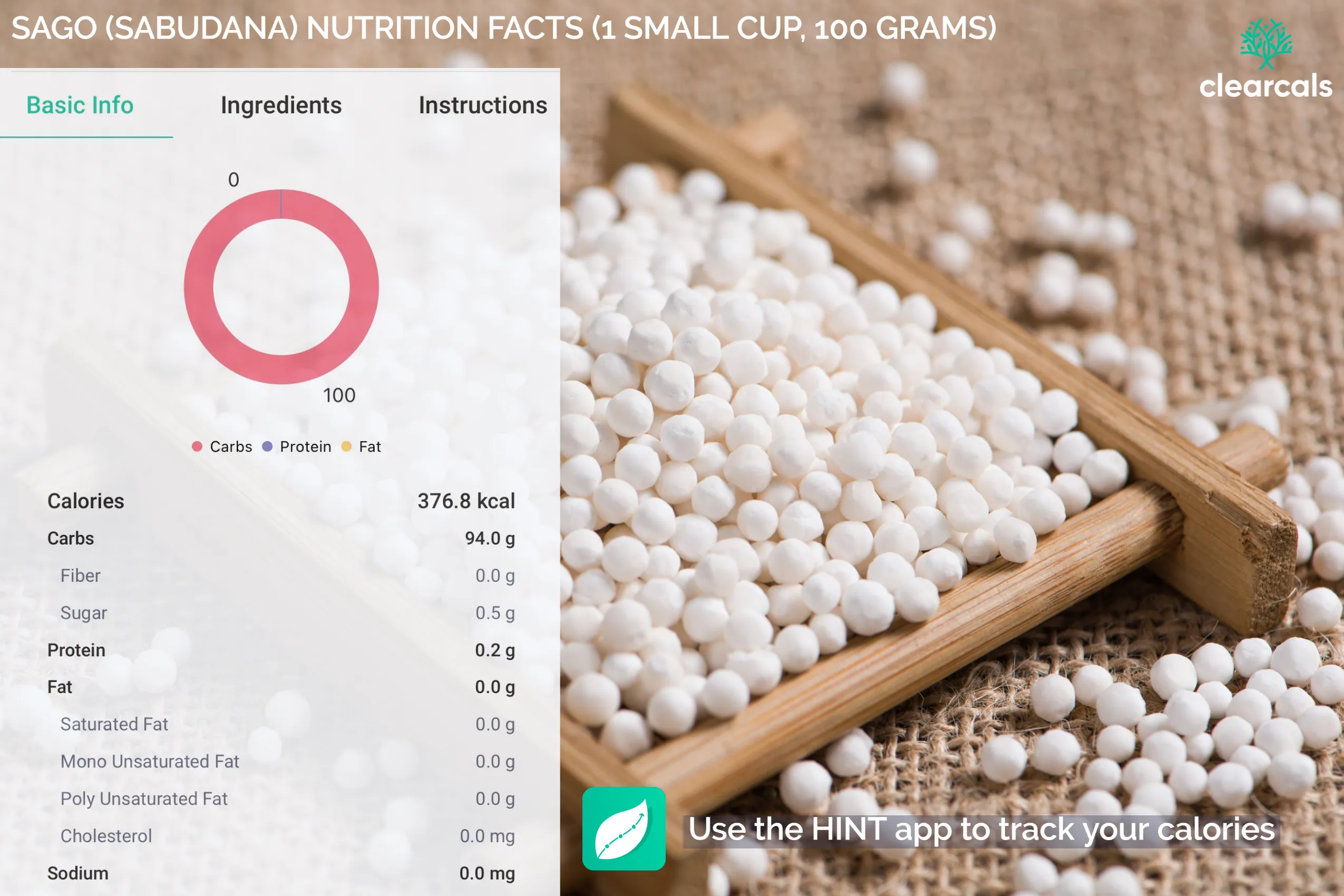
Is Sabudana Good for Weight Loss?
Though sabudana for weight loss might seem counterintuitive, it can be included in a diet if balanced with other nutrient-dense ingredients.
Sabudana alone is high in carbohydrates and low in protein and fiber, so it’s best paired with ingredients rich in these nutrients. Without this balance, sabudana may contribute to weight gain, given its caloric density.
For those aiming to lose weight, the Hint Pro and** Hint Premium weight loss diet plans** offer structured meal planning that includes portion-controlled recipes.
This approach helps optimize your nutrient intake and supports weight loss.
Sabudana Nutrition Value and Benefits
Sabudana nutrition includes high levels of starch, making it a quick energy source but with limited protein and fiber. Let’s break down some of the primary benefits:
- Energy Boost: Sabudana is ideal for fueling up during physically demanding activities, as its carbohydrates provide quick energy.
- Potential Cholesterol Benefits: Some studies suggest that sabudana can help lower cholesterol levels when consumed as part of a balanced diet.
- Supports Immunity: Rich in polyphenols like tannins and flavonoids, sabudana offers antioxidants that help combat free radicals.
Sabudana Glycemic Index and Its Impact on Blood Sugar
The glycemic index of sabudana is relatively high due to its starch content, meaning it can cause a spike in blood sugar levels.
People with diabetes or those monitoring blood sugar should consume sabudana in moderation and combine it with protein and fiber to slow glucose absorption.
Does Sabudana Increase Weight?
Sabudana’s high carbohydrate and calorie content can lead to weight gain if consumed in excess. For weight management, pair sabudana with high-protein foods and consume it in smaller portions.
Using the Hint app’s calorie and macronutrient tracking feature can help manage portion sizes effectively.
Protein in Sabudana and Sabudana Protein per 100g
Sabudana is low in protein, with nearly no protein per 100 grams. While it offers quick energy, it lacks the muscle-supporting benefits of protein-rich foods.
For those focused on muscle maintenance or growth, consider pairing sabudana with other protein sources.
Sabudana Recipes for Weight Loss
Here are a few balanced sabudana recipes that, when enjoyed in moderation, can fit into a weight loss plan:
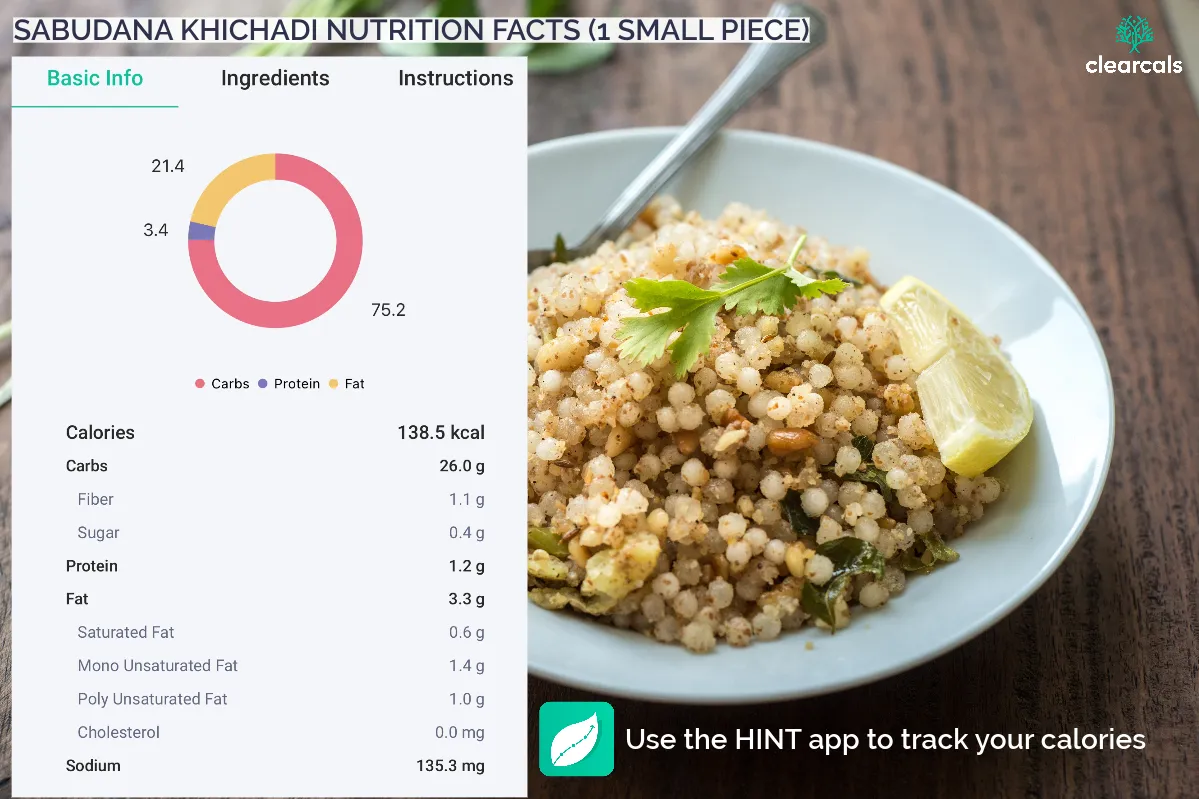
1. Sabudana Khichdi
One small cup of sabudana khichadi contains 138.5 kcal of calories. Out of these, 75.2% is from carbohydrates, 3.4% is from protein and 21.4% is from fat.
Sabudana khichadi is a good source of fiber, potassium, copper, niacin, vitamin E, beta carotene, and an excellent source of vitamin C and vitamin D.
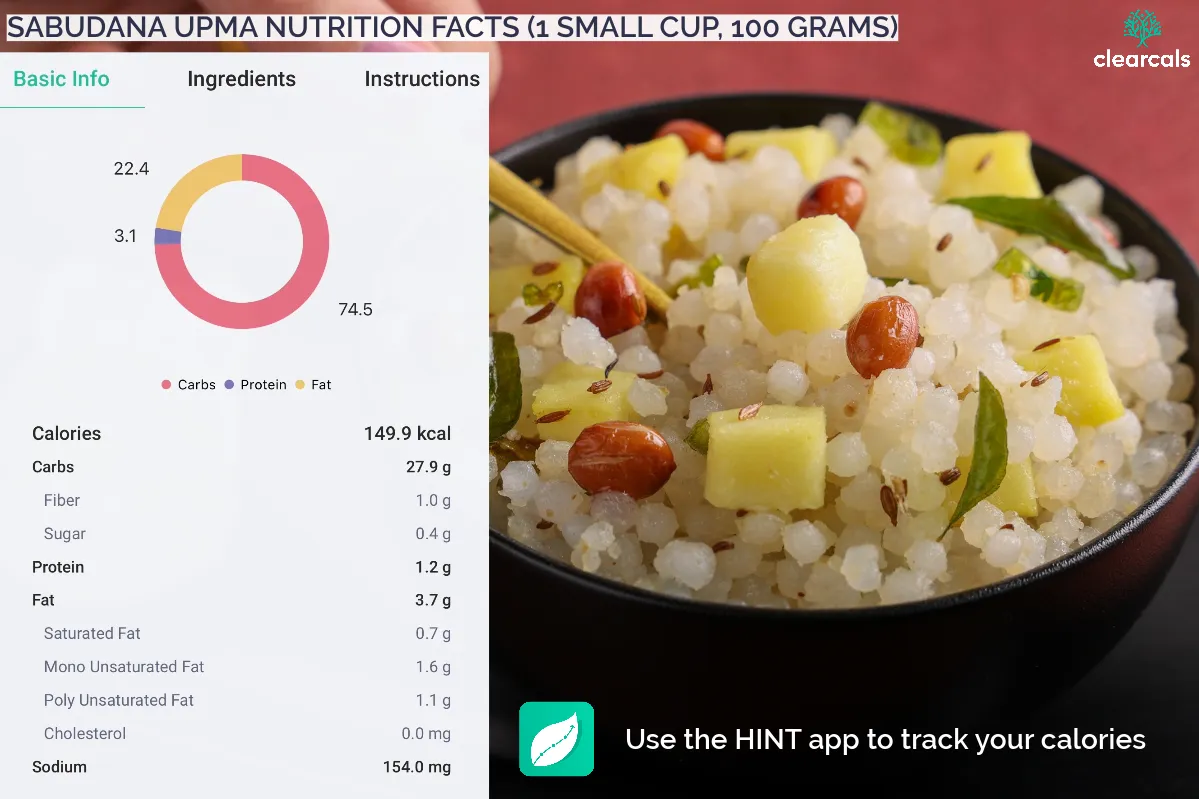
2. Sabudana upma
One small cup of sabudana upma contains 149.9 kcal of calories. Out of these, 74.5% is from carbohydrates, 3.1% is from protein and 22.4% is from fat.
Sabudana upma is a good source of vitamin E, niacin, and beta-carotene. It helps improve muscle mass, provides instant energy, and boosts immunity.
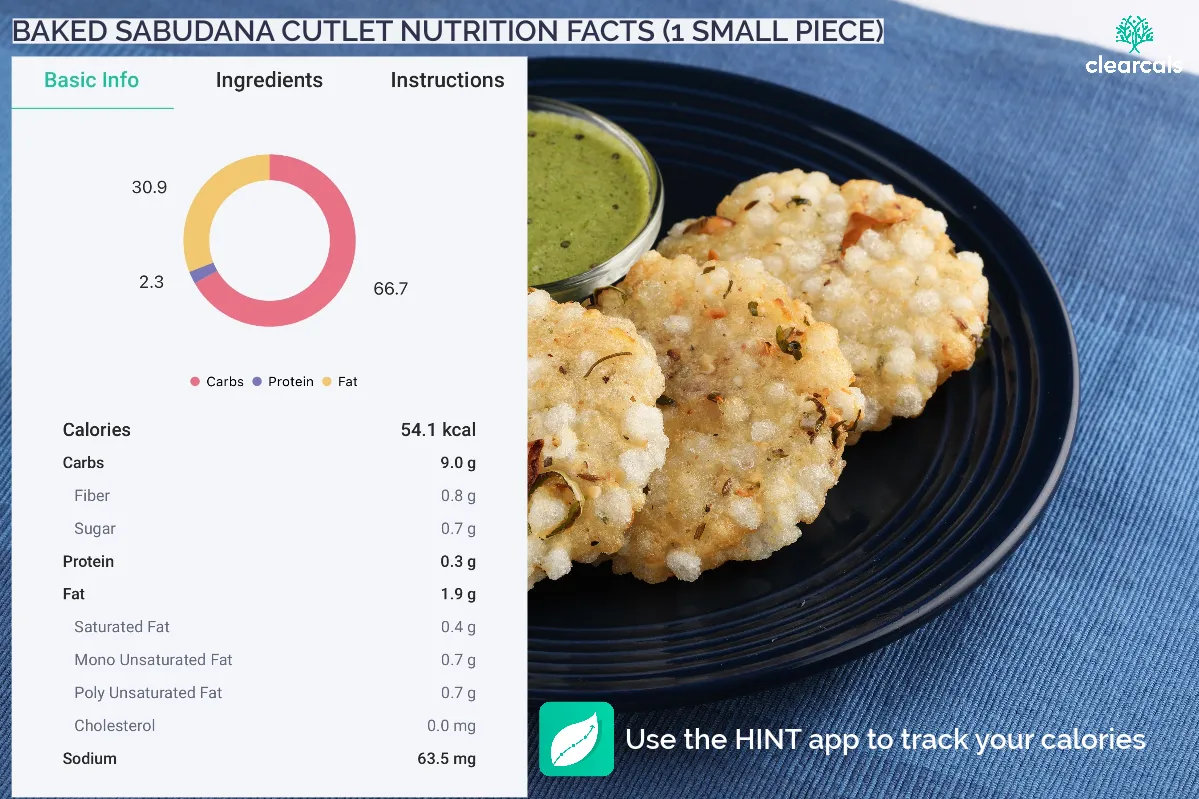
3. Baked sabudana cutlet
One small piece of baked sabudana cutlet contains 54.1 kcal of calories. Out of these, 66.7% is from carbohydrates, 2.3% is from protein and 30.9% is from fat.
Baked sabudana cutlet is a good source of alpha-carotene, lutein, and an excellent source of beta carotene. It is a healthy alternative to fried cutlet.
Is Sabudana Good for Health?
While sabudana has limited nutrients compared to other whole foods, it does offer specific health benefits, such as:
Cholesterol Reduction
: Studies show that a diet including sago may help lower cholesterol levels.
Supports Endurance
: For athletes, sabudana can provide sustained energy during prolonged workouts.
To maximize sabudana’s benefits, it’s best to consume it alongside nutrient-dense ingredients.
For guidance, the Hint Pro and Hint Premium subscriptions provide meal plans that ensure balanced, nutritious choices tailored to your goals.

Sabudana for Weight Loss and Fitness Goals
If you’re working towards weight loss, balanced meals and portion control are essential.
The Hint app supports these efforts by allowing users to track not only calories but also macronutrients, making it easier to manage your intake of high-carb foods like sabudana.
For those who want to pair their diet with a structured exercise plan, Hint Pro and Hint Premium’s Pro Workouts offer guided workouts that complement your nutritional efforts, ensuring a well-rounded approach to weight loss.
Conclusion
Sabudana is a high-carb, calorie-dense food that can be enjoyed in moderation. While it may not be ideal for weight loss on its own, combining sabudana with protein- and fiber-rich ingredients can make it a nutritious option.
Successful weight management requires a balanced diet, regular physical activity, and mindful eating habits.
With the Hint app’s free calorie and macronutrient tracking features, you can make informed food choices. Plus, the Hint Pro and Hint Premium plans offer comprehensive diet and exercise guidance to support sustainable weight loss and improved fitness.
For those looking for a structured weight loss approach, download the Hint app and explore the instant weight loss diet plan for lasting results.





